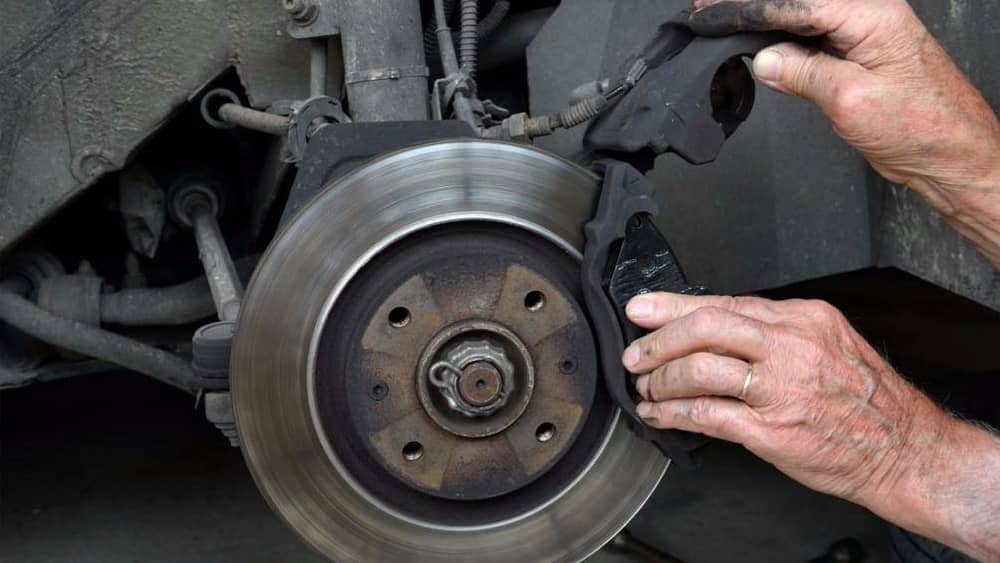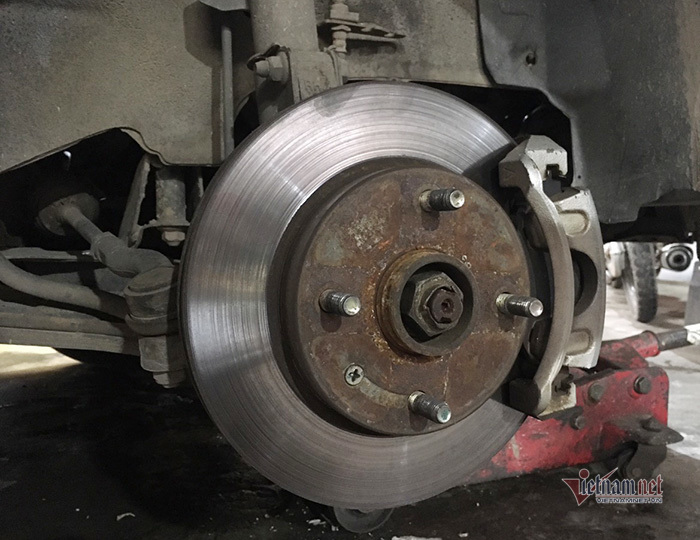Lipped brake discs, which are common in automotive braking systems, have a distinguishing edge or lip around their circumference. This phenomenon results from normal wear and tear. So, what are the reasons for brake discs are lipped?
Material is gradually worn away as the brake pads make contact with the rotating disc to generate friction and aid in deceleration. This process can eventually result in the formation of a lip along the disc’s outer edge.
While lipped discs are a natural result of braking, excessive lip formation can have an impact on braking performance and safety. Typically, professional intervention is required to address this issue. They will machine or replace the brake discs, ensuring optimal functionality and extending the braking system’s overall lifespan. Understanding the importance of lipped brake discs is critical for ensuring vehicle safety and performance.

Why Brake Discs Are Lipped?
Brake disc lip development is a complex process that depends on a number of braking system components.
Friction and Wear
The frictional contact between the revolving disc and the brake pads during braking is one of the main factors in the formation of this distinctive edge. A slow erosion of material takes place as the brake pads clamp onto the rotating disc to produce the required friction for deceleration. The characteristic lip is the result of this wear, which is more noticeable at the disc’s outer edges.
Material Composition
The composition of the materials is crucial to this phenomenon. Usually, brake discs are made of sturdy materials like composite alloys or cast iron. These materials undergo physical alterations due to the intense heat produced during braking, especially when used heavily or for an extended period of time. It renders them prone to deterioration.
Uneven Pad Wear
The development of a lip can be made worse by uneven brake pad wear. Frictional forces are not distributed evenly when a portion of the pad wears down faster than the others. It causes the surface of the disc to erode unevenly.
Aggressive Driving or Heavy Loads
Driving aggressively or constantly carrying large loads puts more strain on the braking system, which accelerates wear and the development of a lip. Furthermore, the lifespan of the braking system is greatly impacted by the caliber of the brake parts. Poorer brake discs or pads might not be strong enough to endure the intense heat and stress produced when braking. Wear is accelerated as a result of this.
Lack of Regular Maintenance
In order to minimize the formation of a lip, regular maintenance is essential. Brake system problems are resolved through prompt brake pad replacement. Furthermore, maintaining the integrity of the braking components depends heavily on following advised service intervals.
Environmental Factors
Brake disc wear rate can also be affected by environmental factors, such as weather and exposure to corrosive road materials.
How To Fix Brake Discs Are Lipped?

Here’s a step-by-step guide to repairing lipped brake discs:
Measurement and Assessment
Let’s use a brake caliper or a specialized measuring tool to precisely determine the extent of the lip. Check to see if the lip is within acceptable limits. Replacement of the brake discs may be the most prudent course of action if the lip is excessively large.
Brake Pad Inspection
Look for signs of uneven wear or damage on the brake pads. Uneven pad wear can contribute to the development of a disc lip. Replace the brake pads if they show signs of wear, making sure that the new pads are of high quality and compatible with the braking system.
Professional Machining
Lipped brake discs are frequently salvageable through professional machining, or “turning.” To eliminate the lip and create a smooth, even surface, remove a thin layer of material from the disc’s surface. It is critical to use the services of a reputable brake machining company with specialized equipment. It is imperative to adhere to the manufacturer’s specified minimum thickness to guarantee that the disc stays above this threshold following machining.
Replacement Consideration
If the lip becomes excessively large after machining, or if the disc’s thickness falls below the manufacturer’s specified minimum, you can replace for safety reasons. To determine the acceptable disc thickness limits, consult manufacturer guidelines.
Quality Brake Components
Install high-quality brake pads and discs to reduce the possibility of uneven wear and to extend the life of the braking system. Inadequate components may contribute to premature wear, resulting in a lip recurrence.
Proper Bedding-In Procedure
Follow the manufacturer’s recommended bedding-in procedure after installing new brake pads or discs. This procedure optimizes the contact between the pads and the discs, resulting in even wear and improved braking efficiency.
Regular Maintenance
Create a maintenance schedule for the braking system. Inspect and replace brake pads as needed on a regular basis, and keep an eye on the condition of the brake discs. A lip can be avoided if problems are addressed promptly during routine maintenance.
Address Underlying Issues
Investigate and correct any underlying issues that may be causing uneven wear. They could be caliper issues, imbalances, or hydraulic system issues. Comprehensive troubleshooting ensures the braking system’s longevity and dependability.
You can effectively address lipped brake discs by meticulously following these steps and adhering to manufacturer specifications. If you are unsure, it is best to seek professional help to ensure a thorough and accurate resolution to the problem.
Should You Drive When Brake Discs Are Lipped?

You can drive with lipped brake discs, but doing so endangers your safety and that of your vehicle. Here are some reasons why driving with lipped brake discs is a bad idea:
Reduced Braking Performance
Lipped brake discs reduce braking system effectiveness. The uneven surface can cause inconsistency between the brake pads and the disc, resulting in poor braking performance. This can increase stopping distances significantly and impair your ability to respond to sudden braking situations.
Increased Wear on Brake Components
Driving with lipped brake discs can hasten wear on other braking system components, such as brake pads. Uneven contact between the pads and the disc can result in premature and uneven pad wear, reducing the pads’ lifespan.
Risk of Further Damage
Driving on lipped brake discs can make the problem worse. The brake system may sustain further damage as a result of the discs’ uneven surface, which can also accelerate wear. It might lead to more involved and expensive repairs.
Safety Issues
The most important thing when driving a car is safety. You can’t stop quickly and safely because of limped brake discs, particularly in emergency situations. This puts you, your passengers, and other drivers on the road at serious risk.
Noise and Vibration
When braking, limped brake discs may produce noise and vibrations that detract from the overall comfort and driving experience. This not only suggests a braking system issue, but it may also be a sign of more serious problems to come.
It’s critical to take quick action if you discover a lip on your brake discs or notice any changes in the way your brakes operate. You can consult with a qualified mechanic to determine the best course of action.
To sum up, because of the possible risks to safety, you shouldn’t drive with lipped brake discs. Make routine maintenance a top priority to guarantee your braking system’s continuous safety and best possible operation.
